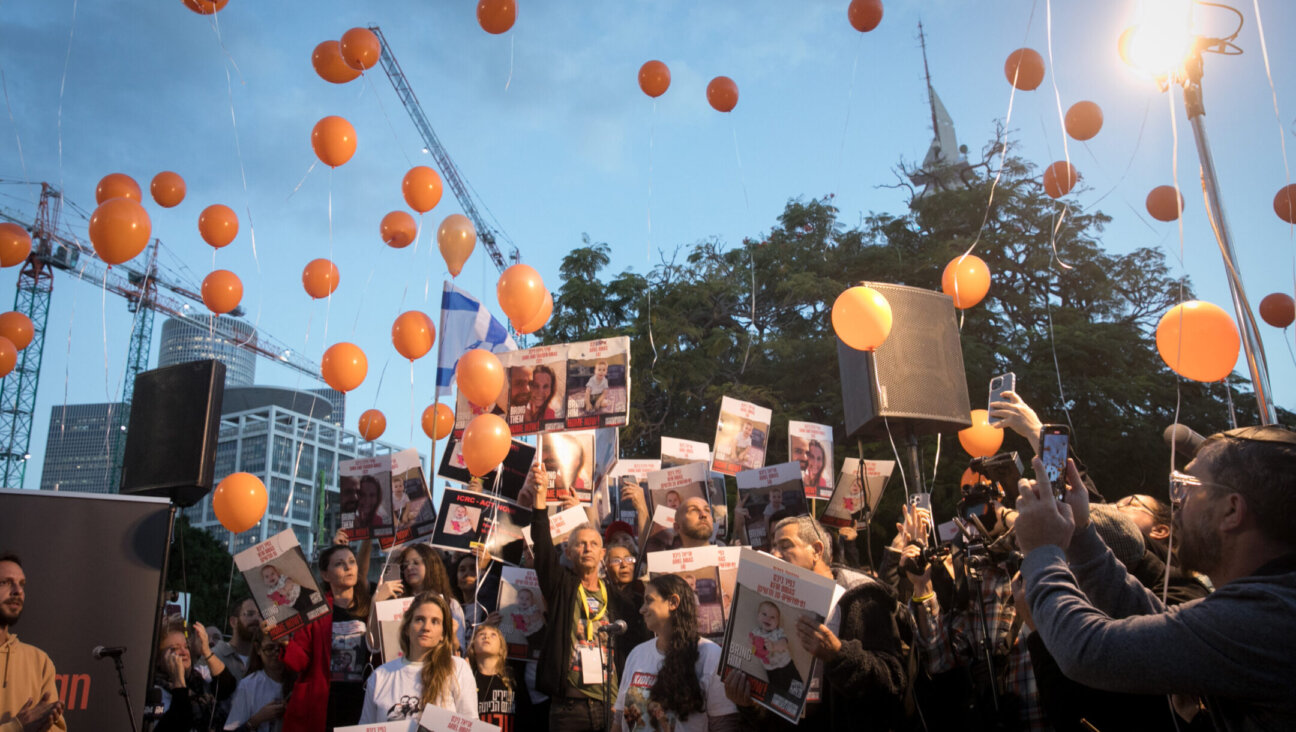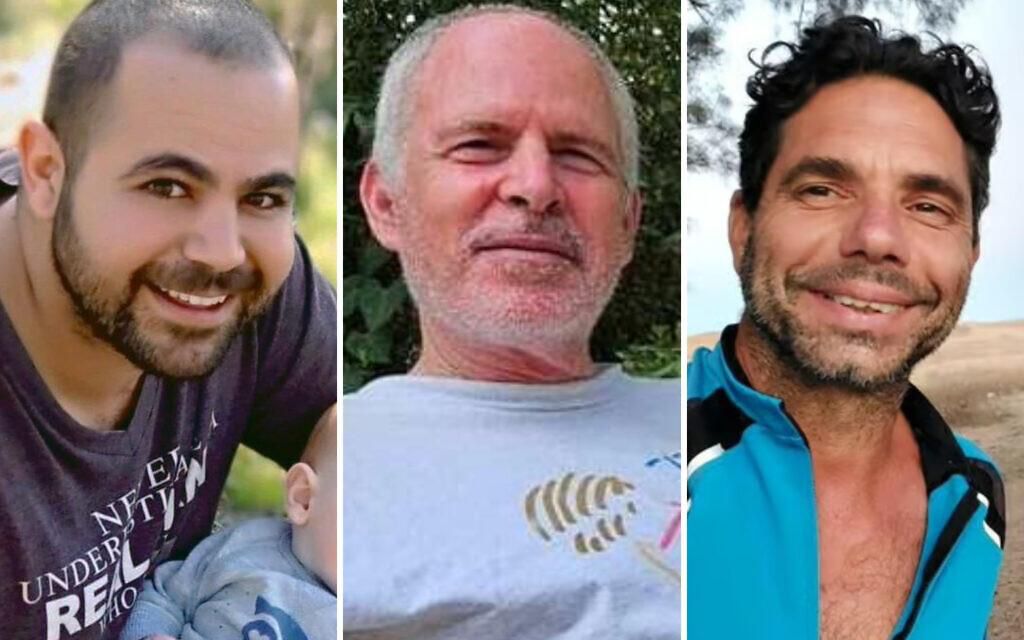Til Death Do Us Part? Not So Fast

Image by Sybil Sage
My husband, Martin, and I have been married for 31 years, so it’s not as if there hasn’t been time to consider an end-of-life strategy. We could have resolved the issue while driving to Costco, except it’s a conversation Martin was determined to avoid.

For Eternity: Sybil Sage creates personalized urns for Jews who want to be creamated. Image by Sybil Sage
That we had no Exit Plan was less troubling when our son, Nick, was young and I was preoccupied with childproofing electrical outlets and hiding pills in peanut butter. But as we all got older, it felt irresponsible that Martin and I had given no directives about where we’d like to end up, let alone made the arrangements. Our son is now 27, mature and independent. Still, I became distraught at the prospect of his being burdened with decisions that should have been handled by us. That fear intensified when I reached the age where a new bracelet, if inscribed, is most apt to read, “I take Lipitor.” I appealed to Martin, “If you and I die together, not only will Nick be going back and forth to the thrift shop, unloading our old textbooks and LPs, but he’ll have to figure out how to unload us.”
Most of our deceased relatives and Jewish friends had adhered to the traditional Jewish burial customs, and I’d assumed we’d do the same. Then, this past year, we attended memorial services for several friends who’d been cremated. They weren’t necessarily “tree huggers,” but as do most of us, they cared about the environment and believed cremation to be more “sustainable” than interment. Cremation is also substantially cheaper.
The practice is prohibited by traditional Jewish law. According to David Kraemer, professor of Talmud and rabbinics at the Jewish Theological Seminary, “Judaism has believed that honoring the deceased is a principle of very high value, and cremation — the premature and, in the belief of our ancestors, painful destruction of the body — was understood to be contrary to the honor of the deceased.”
Some Conservative and Reform Jews, however, are now choosing to be cremated. While there are no firm statistics on Jewish cremations, it has become more popular among the general population of the United States and Canada, with the expectation being that in 25 years, the cremation rate will be 50%.
Martin and I are far less observant than our Orthodox parents had been, embracing the aspects of Judaism that we find meaningful. But since he refused to talk about death, I couldn’t know if he might be open to cremation, nor was I clear about my own feelings.
For years, I’ve been designing mosaic art objects in the French style known as pique assiette, nipping dishes into tiny shards and combining them to create one-of-a-kind tables, vases, picture frames and candlestick holders. Some months ago, I turned this into an online business. While working, I watch cable news, so my background noise is a parade of political scandals, financial frauds, and national health care and unemployment crises.
In the early 1970s, I became a comedy writer. I was now inspired to use mosaic to express political satire, finding red, white and blue plates with flag images for what I called my Breaking News Series. I assembled pictures of my bêtes noires — Sarah Palin and Michele Bachmann, John Edwards and John Ensign, Kenneth Lay and Bernie Madoff, the National Debt Clock and corporate logos. To add bite, I’d set the mosaics on cremation urns.
I submitted one such urn to an edgy Brooklyn art show. At the opening party, I watched guests studying the piece, identifying the right-wingers to one another as if it were a party game. Photos and text inserted into the mosaic made a cutting political statement, but I began to consider whether the aesthetic might have a wider — and more functional — application. With this process, I could animate an urn for actual usage that would visually tell the story of a life. It would be highly personal and have a celebratory quality.
A few months ago, as I was setting the table for dinner, I surprised myself by blurting out: “You’ll be most affected by this, Nick. Would you prefer that we be buried or cremated?”
He shot me a puzzled look. “Uh, any reason you’re asking?”
“How about I make urns for Dad and me? I can cover them with fun photos — family vacations, birthday parties, graduations,” I said.
He didn’t answer immediately.
“They’ll be pretty and about life!” I urged. “I’ll use our dishes. It’ll remind you of the dinner table.”
It felt like forever before Nick said, “Sounds good.” Martin remained silent, which I interpreted as enthusiasm. Granted, this was a quirky, almost frivolous way of deciding such a significant matter. But obviously, Martin and I needed something to propel us to take action, and I’d inadvertently stumbled upon it.
Though I was thrilled to finally have a plan, I wasn’t eager to get started. The reality of handling the thing that would be holding me was unsettling.
A friend said, “This is wrong.” I expected to be reprimanded for breaking centuries of tradition, but her objection was: “You and Martin have been married all these years. You were a writing team. You should be in one urn!” Winding up together in the same space felt reassuring, as close to a happy ending as there can be.
Once I was immersed in the work, it introduced an acceptance and normalcy to the inevitable. As the three of us chose pictures and letters, we had conversations that parents tend not to have with their children, like what to do with us when we become more burdensome than fun. Creating what would be our final stop helped us find comfort in mortality.
Because our dinnerware is from the South of France, the urn I designed for Martin and me is vivid shades of blues and yellows. Friends who’ve seen this urn in our home and others who have spotted them on my website have commissioned me to create personalized urns for family members or for pets, or for themselves to pass along to their children.
Some who believe that death requires a somber approach question my upbeat spin. I explain I hope a beautiful urn that honors memories of a loved one can take some of the sting out of death.
Sybil Sage is a freelance writer and artist living in New York.
A message from our Publisher & CEO Rachel Fishman Feddersen

I hope you appreciated this article. Before you go, I’d like to ask you to please support the Forward’s award-winning, nonprofit journalism so that we can be prepared for whatever news 2025 brings.
At a time when other newsrooms are closing or cutting back, the Forward has removed its paywall and invested additional resources to report on the ground from Israel and around the U.S. on the impact of the war, rising antisemitism and polarized discourse.
Readers like you make it all possible. Support our work by becoming a Forward Member and connect with our journalism and your community.
— Rachel Fishman Feddersen, Publisher and CEO





















